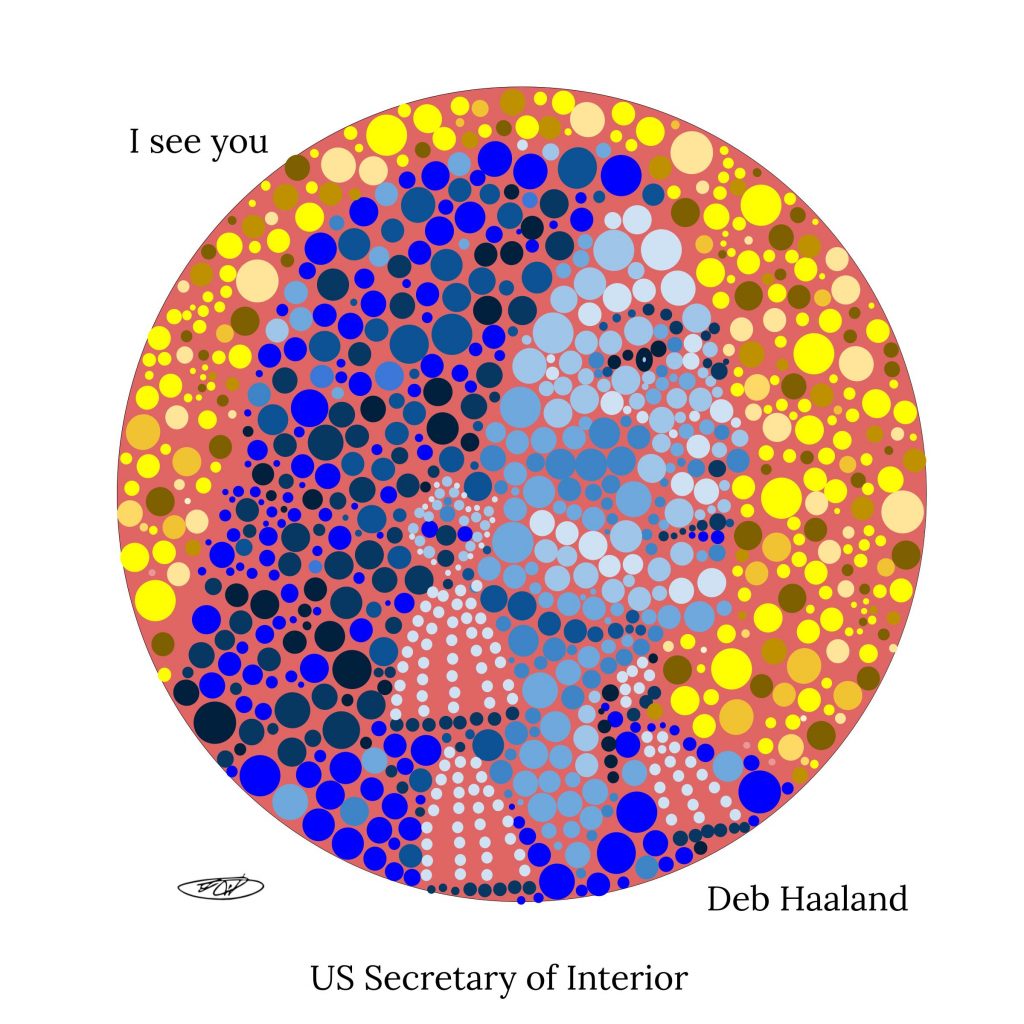The names of about half of the 50 states in the US are derived from the language of Indigenous Peoples. People, many of whom were killed, driven into hiding, sold into slavery and forbiden to use their native languages and tribal names that are memorialized in the names of states they may no longer inhabit. The Commonwealth of Massachusetts, where this art was created, is plural, from the Algonquian words mus(ây) + wach8 + -s + –ut which translates roughly as “at the large hill,” in reference to Great Blue Hill, southwest of Boston. Boston, named in 1630, is called Shawmutt in Algonquin. Understanding the name of a place helps to understand the place better.
I therefore acknowledge the Indigenous Peoples as the traditional stewards of the land where the art was created and the enduring relationship that exists between them and their traditional territories. The land that I am on today is at the boundary of the traditional, unceded, territory of the Wampanoag/Massachuset Nation to the East, the Pennacook/Pautucket Nation to the North and the Nipmuc Nation to the West. Indigenous people moved in and out of the area and overlapped each other when fishing, hunting and traveling. They were the first to raise homes, make families, plant gardens, find medicine and many other firsts that go unrecognized.
As an ally, I acknowledge the painful history of genocide and forced removal from this territory, and I will continue to act for and support the traditional people of this land.
Data from the Centers for Disease Control and Prevention collected between 1999 and 2011 shows that Native Americans, who are 0.8 percent of the United States population, comprise 1.9 percent of police killings. They are 3.1 times more likely to be killed by police than whites. (Law enforcement kills African Americans at 2.8 times the rate of whites.)
Yet the killings of Native people go almost entirely unreported by mainstream U.S. media
https://eji.org/news/native-americans-killed-by-police-at-highest-rate-in-country/







